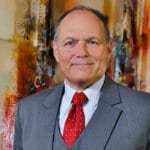The Reach of the Automatic Stay in Bankruptcy: Far, But Not that Far
December 10, 2015 |When a corporation or individual files for bankruptcy protection, a self-executing “automatic stay” takes effect under Bankruptcy Code Section 362[i] that prohibits a wide range of acts or proceedings “against the debtor” that could have been taken before the filing of the bankruptcy case. As provided in Section 362, these include (1) the commencement or continuation of a judicial, administrative, or other action or proceeding against the debtor that was or could have been commenced before the debtor’s bankruptcy, or to recover a claim against the debtor that arose before the debtor’s bankruptcy; and (2) any act to create, perfect, or enforce any lien against property of the debtor’s bankruptcy estate.
Generally speaking, the automatic stay does not extend to protect non-debtor third parties – including principals, directors, officers and shareholders of a debtor that is a closely-held corporation. This article discusses the automatic stay and its application to non-debtors, including through the use of a Bankruptcy Court’s equity powers under Section 105 of the Bankruptcy Code.
The Scope of the Stay
The automatic stay is effective upon the filing of a bankruptcy petition.[ii] The injunctive nature of the automatic stay imposes on all affected parties an obligation to respect the stay until such time that it is lifted by the bankruptcy court. In addition, any action taken in violation of the stay is void and of no force and effect.[iii]
As noted above, the automatic stay generally does not apply to actions against non-debtor third parties. As the U.S. Court of Appeals for the Second Circuit has stated, it is “well-established that stays pursuant to § 362(a) are limited to debtors and do not encompass non-bankrupt co-defendants.”[iv]
A corporate debtor’s insiders (i.e. directors, officers, persons in control of debtors, or their relatives) who have not filed their own bankruptcy case are not entitled to the protection of the debtor corporation’s automatic stay simply by virtue of who they are, e.g., principals of the debtor. The U.S. Bankruptcy Court for the Eastern District of New York has observed that the general rule is that the automatic stay “only protects the debtor and does not extend injunctive coverage to non-debtor third parties, including equity shareholders and principals of a corporate debtor or an LLC.”[v] The U.S. District Court for the Southern District of New York has pointed out that courts in the Second Circuit “have regularly refused to extend a debtor corporation’s § 362(a) stay to its non-debtor officers and principals.”[vi]
Special Circumstances
Although only a debtor is entitled to the protections of the automatic stay under Section 362, a Bankruptcy Court may grant extraordinary relief and extend the stay to actions against a non-debtor using its authority under Section 105. Those extensions, however, are reserved for “‘special circumstances’, and typically apply to lawsuits which threaten serious risk to a [bankruptcy] reorganization in the form of immediate adverse economic consequences for the debtor’s bankruptcy estate.[vii]
Moreover, the debtor has the burden to demonstrate the existence of “unusual circumstances” and must explain why the failure to extend the stay would pose a “serious threat” to the debtor’s reorganization efforts.[viii]
The leading case enunciating the exception to the general rule that the automatic stay does not apply to non-debtors is A.H. Robins Co. v. Piccinin.[ix] In A.H. Robins, the U.S. Court of Appeals for the Fourth Circuit found that in “unusual circumstances,” the automatic stay could be extended to actions against non-debtors. The debtor in A.H. Robins manufactured the Dalkon Shield, an intrauterine device, that was later discovered to be defective. As a result, thousands of actions were initiated against the debtor and its insurance provider, forcing the debtor to file for bankruptcy.
The plaintiffs in various non-bankruptcy actions sought to sever their actions against the debtor in order to proceed against the co-defendants. The Fourth Circuit affirmed the District Court’s decision to issue an injunction staying the plaintiffs’ suits against the debtor, and held that a court may stay proceedings under “unusual circumstances,” which would require “something more than the mere fact that one of the parties to the lawsuit has filed . . . bankruptcy.”
According to the circuit court in A.H. Robins, “unusual circumstances” would include a situation where there was such identity between the debtor and the third-party defendant that the debtor may be said to be the “real party defendant” and that a judgment against the third-party defendant would in effect be a judgment or finding against the debtor.
Case law in the Second Circuit supports the vitality of A.H. Robins in this circuit. For instance, in Queenie, Ltd. v. Nygard Intern,[x] the U.S. Court of Appeals for the Second Circuit concluded that the automatic stay applied to an action commenced against, inter alia, a non-debtor corporation that was wholly owned by an individual Chapter 11 debtor. According to the Second Circuit, “the automatic stay can apply to non-debtors, but normally does so only when a claim against the non-debtor will have an immediate adverse economic consequence for the debtor’s estate.”
The Second Circuit in Queenie listed several examples of such immediate adverse economic consequences including:
(1) a claim against a non-debtor for an obligation for which the debtor was a guarantor;[xi]
(2) a claim against a debtor’s insurer;[xii] and
(3) actions where there was an identity between the debtor and third-party defendant such that a judgment against the third-party defendant would in effect be a judgment or finding against the debtor.[xiii]
Conclusion
As the decisions discussed in this article make clear, the automatic stay typically applies only to debtors who file for bankruptcy protection. In certain special circumstances, courts may apply the stay to non-debtors such as corporate insiders, but the burden that is on the debtor to persuade the Bankruptcy Court to extend the stay is quite high.
[i] 11 U.S.C. 362.
[ii] See, e.g., Celotex Corp. v. Edwards, 514 U.S. 300 (1995).
[iii] See, e.g., In re 48th Street Steakhouse, Inc., 835 F.2d 427 (2d Cir. 1987).
[iv] Teachers Ins. & Annuity Ass’n of Am. v. Butler, 803 F.2d 61 (2d Cir. 1986).
[v] In re FPSDA I, LLC, 2012 Bankr. LEXIS 5928, *24 (Bankr. EDNY Dec. 26, 2012).
[vi] Gucci, Am., Inc. v. Duty Free Apparel, Ltd., 328 F. Supp. 2d 439 (SDNY 2004).
[vii] Id., at 328 F. Supp. 2d. at 442, quoting In re Northstar Contracting Corp., 125 B.R. 368, 370 (SDNY 1991).
[viii] De Souza v. PlusFunds Grp. Inc., 2006 U.S. Dist. LEXIS 53392, at *6 (SDNY Aug. 1, 2006).
[ix] 788 F.2d 994 (4th Cir. 1986).
[x] 321 F.3d 282 (2d Cir. 2003).
[xi] See, e.g., McCartney v. Integra Nat’l Bank North, 106 F.3d 506 (3d Cir. 1997).
[xii] See, e.g., Johns-Manville Corp. v. Asbestos Litig. Group (In re Johns-Manville Corp.), 26 B.R. 420 (Bankr. SDNY 1983).
[xiii] See, e.g., supra note 9 and accompanying text.
Reprinted with permission by the Nassau County Bar Association. 2015




